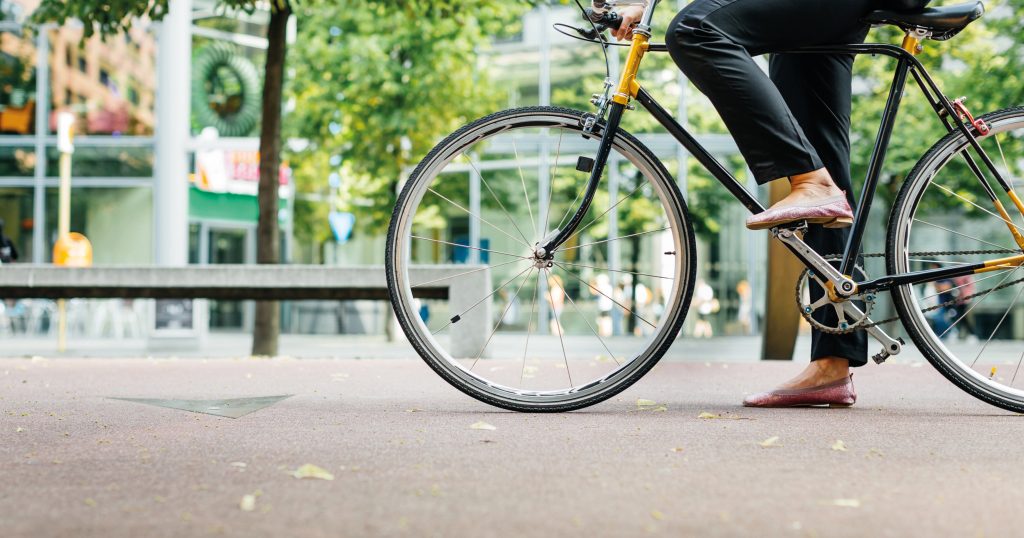The benefits of cycling are extremely overwhelming, from a highly positive effect on mental and physical health to reducing one’s carbon footprint considerably. Many businesses and organisations greatly advocate for their employees to take up cycling over driving into the office, providing a cheaper and better travel option which improves air quality and an overall standard of living.
The UK government introduced the Cycle To Work scheme way back in 1999, as part of the Finance Act which outlines salary and tax incentives for employers and employees who wish to cycle to work. As per data retrieved from the Cyclinguk.org, the city with cycling being the most popular form of transport when travelling to work was Cambridge, with 29% of those surveyed stating cycling was their usual method of travel to work. The national average in England is 5.3% of the population.
At Nordens, we’re proud to be a part of the Cycle To Work scheme which allows our team to access bikes and equipment for travel into work. This has been a huge success, with many of our team members taking up the scheme which in turn provides great health benefits, and commits to the reduction of our overall carbon footprint as a firm.
We break down exactly what the Cycle To Work scheme is, the impact it can have on the workforce and how employers and employees can sign up…
What Is The Cycle To Work Scheme & How Does It Work?
The Cycle to Work scheme is a salary sacrifice scheme, which basically means an employee agrees to exchange part of their salary for a non-cash benefit, which in this circumstance is a bike or cycling equipment. A Cycle to Work scheme can benefit both the employer and the employee through both financial and health means. Depending on how much tax an employee pay and which scheme an employer offers, the typical savings equate to 32%-42% on a bike and/or safety accessories. For example if an employee chooses to salary sacrifice £700 for a new bike and cycling kit, the monthly deductions from their gross pay would equate to £58.33 (£700 divided by 12 months). As the gross pay has reduced by £700 they won’t be entitled to pay tax or national insurance on that amount, meaning if they are a basic rate tax payer the total cost would be £476, which is a 32% saving of £224. For those who are on the higher rate of income tax, the savings will be even higher.
The organisation decides the amount of the salary sacrifice, with the government announcing the lifting of the £1000 cap back in June 2019. If the scheme meets the relevant criteria it can benefit from a tax exemption introduced under Section 244 of the Income Tax (Earnings and Pensions) Act 2003. Since a portion of the salary is foregone, the employee pays less tax and National Insurance Contributions (NICs), and the employer is able to save on employer NICs at 13.8% and Apprenticeship Levy at 0.5% (where applicable) on the amount sacrificed.
How Do I Register For The Scheme As An Employer?
Any employer, of any size, across the public, private and voluntary sectors can run a Cycle to Work scheme. However, the tax and National Insurance benefits apply only to staff who are treated as employees. Many cycling outlets and initiatives are part of the Cycle To Work scheme including Evans Cycles, Halfords, Cyclescheme and many more. Where a bike and equipment is made available to an employee under a salary sacrifice arrangement, there will be a consumer hire agreement in place which will typically be between the employee and the employer, however this could be through a third party, such as a scheme provider.
If an employer chooses to take up the Cycle To Work scheme, they will need to complete a short registration with a dedicated provider which will then give access to a range of free promotional materials outlining the benefits of the scheme to pass onto employees. They then instruct their employees to have a look at the type of bike and equipment they want, which is then appropriately reviewed and signed off by a HR or company representative. The bike and accessories are then ordered, with salary repayments starting over a 12 month period. After this period the employer will have recovered their costs and generated up to 13.8% in savings. The employee will be then given a range of ownership options on whether they want to own the bike outright, or even upgrade to a different bike on the same scheme.
How Do I Register For The Scheme As An Employee?
You will need to speak to senior management or a HR representative at your business or organisation if you’d like to enrol in the Cycle To Work scheme or to see if the Cycle To Work scheme is already in place. Once your employer is signed up, they will receive an employer code which can be used in all Cycle To Work schemes by providers. Employees can then log on to the relevant provider’s Cycle To Work scheme portal and choose the specific bike and equipment they want. Once arrived, it will trigger the 12-month salary repayment period, with the relevant amount being deducted from payslips.
An extensive range of equipment can be included in the salary sacrifice scheme, including pedals, mudguards, pannier racks, saddles, stems, seat-posts, tyres, pumps, tools & maintenance items, child seats & car racks, and replacement bike parts. As well as this certain clothing and accessories can be included, such as helmets, lights, locks, cycle clothing, high-viz items such as trouser clips, helmet cover, shoes, bags and bag covers, and cycle cameras.
If you already own a bike and wish to use the Cycle To Work scheme to improve your bike, this is perfectly acceptable and works just the same way as when wanting a brand new bike under the scheme. The minimum amount for the Cycle To Work scheme is £100 per employee, with the maximum cap determined by your employer.
We hope this has outlined to you exactly what the Cycle To Work scheme is, and its overwhelming benefits for both employers and employees. If you require any further information on any government work schemes, or anything accounting related for that matter, please don’t hesitate to get in contact with us at Nordens where one of our trusted advisors would be happy talking you through your query.















